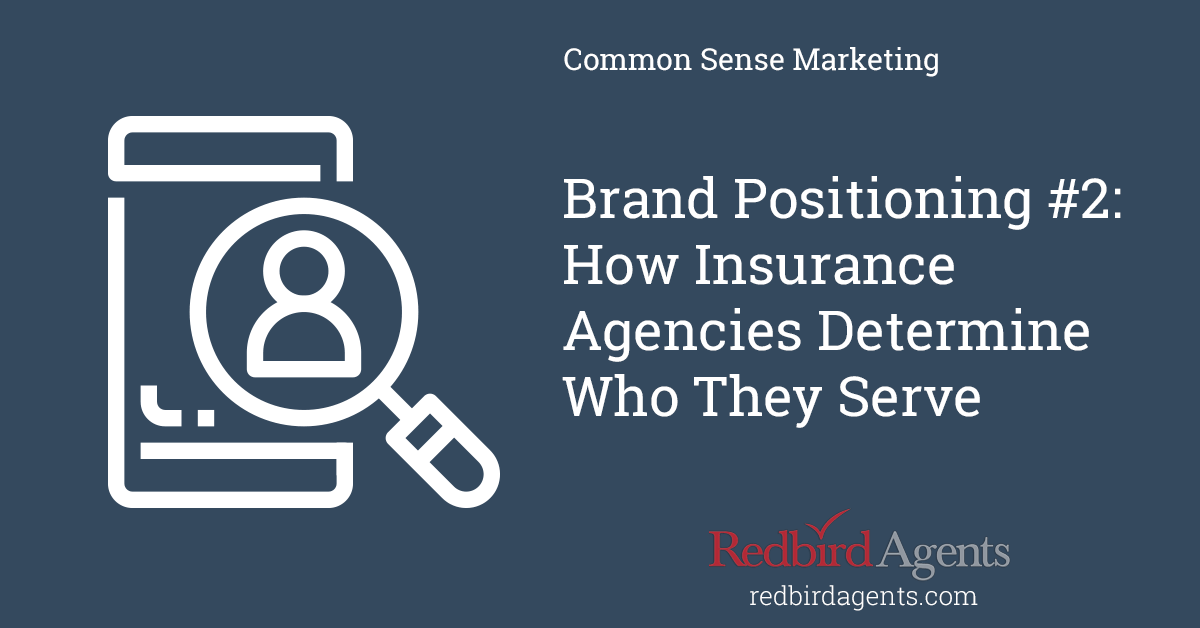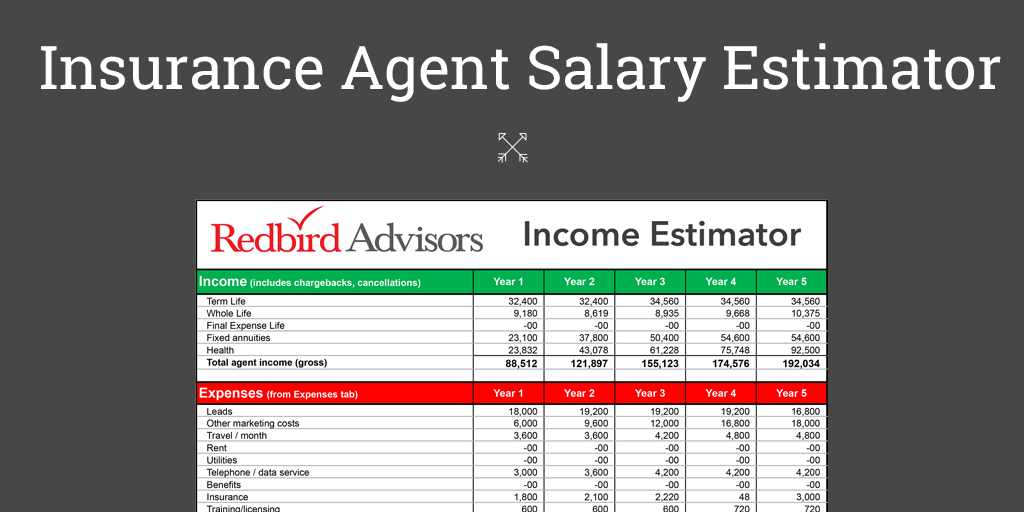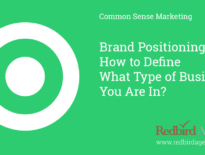
Editor’s note: Our previous article on What Business are we in defined the first of six core questions you must answer to define a unique spot in the market for your business. This article focuses on the second of those six: Who Do We Serve?
Who do we serve? “It depends” is not good enough.
Who is your most important group of customers or prospects?
“It depends” is likely your answer.
In the insurance business you talk to a wide range of people: age, income, location, family needs, etc. They each bring unique opportunities, which is why many insurance agents see themselves as jacks of all trades… available to help with whatever customers need.
That’s an excellent sales strategy… you must meet customers on their terms.
Brand positioning is a business strategy… you must define what makes you unique so customers will seek you out.
The purpose of a brand positioning is to help you focus all your business capabilities—sales, service, marketing, etc.—on high potential and well-defined groups of customers—we’ll call them your most important customers—who will anchor your business for years to come.
NOTE 1: The characteristics you ultimately identify for high potential/most important customers will apply for current customers, past customers and prospective customers. We call them all “customers” to keep it simple.
NOTE 2: This process works for both consumer and business customers.
How do you determine your most important customers?
Let’s get a controversial concept out of the way: not all customers are most important.
In a strategically-interesting move in 2004, Best Buy stores identified a group of customers who it believed were abusing its liberal customer service and product return policies, creating a significant drag on profits. Best Buy estimated 100 million of its 500 million customers fell into this group.
Best Buy embarked on an aggressive program to narrow its focus on its most profitable 20% of customers and dump its most unprofitable 20%.
This article will help you find more of the kinds of customers that are a great fit for you. Let’s get to work.
Who do you serve: Finding your high potential target audience
Search the internet for the phrase “identifying a target audience” and you get everything from the “four” to “101” things to do.
For those who don’t have hundreds of folks on your marketing staff or don’t have a marketing staff at all, you can relax… there really aren’t 101 things to do.
We take a more common-sense approach with our insurance agent and agency clients, starting with two broad areas to define:
- What are the beliefs/values of these elusive “most important” customers, and
- What personal (or business) characteristics/attributes can help you find them?
Let’s start with their values—the “why” of their decision process—and follow up with the best strategies to find them.
What drives the decision process of customers?
Every person has deep-seated values that are the fuel for everything they do, from child-rearing to purchasing cars. Understanding which values drive an individual’s behavior is the holy grail for savvy insurance marketers.
Good news: most of your competitors are not savvy marketers.
The Harvard Business Review published an article on fascinating research by Bain and Company on how marketers can better identify values that drive the decision process. Bain’s goal was to find “universal building blocks of value” that translate into greater customer loyalty and revenues.
The research identified 30 “elements of value” broken into four distinct levels: functional as the most basic, emotional, life-changing and, at the top, social impact.
For example, the article cited Fit-Bit’s exercise tracking products fall into the motivation element (life-changing), while The Container Store’s core element is organizes (functional). It’s not uncommon for more complex products and services to fall into multiple elements and levels.
Be careful: What customers say about what’s important may not always explain their real motivations.
An interesting aspect of the research—any market research for that matter—is what customers say about what drives their decisions doesn’t always explain the full story. Here’s an example from the article:
“When the owner of a $10,000 Leica (camera) talks about the quality of the product and the pictures it takes, an underlying life-changing element is self-actualization, arising from the pride of owning a camera that famous photographers have used for centuries.”
While the customer’s explanation about owning the camera is functional, the real reason is more life-changing.
A less-knowledgeable marketer might highlight the camera’s “quality photographs”, completely missing the nuances of what is deep in the mind of a Leica owner.
Let’s try an insurance example (not from the article). You’re talking to the co-owner of a company who needs life insurance as part of a buy-sell agreement. They tell you the primary reason they want the insurance is to ensure the continuity of the company. However, underlying that is a more basic reason: the insurance ensures that their spouse and/or their partner’s spouse cannot get control of the company.
The implications for your marketing messages are huge. The first reason is the standard, practical reason anybody buys life insurance. The second reason is the real reason.
Many companies we love base everything they do on customers’ core values.
Apple targets people who crave innovation. Liking innovation isn’t enough; they must crave it. This strategic pillar drives everything from new product development to packaging to advertising. And, Apple’s unquestioned success with innovation gives it permission to engage in other high-tech industries, like self-driving cars.
McDonald’s is after people who value consistent quality. Actually, McDonald’s is obsessed with consistency, which is one way it can hold its prices in the face of deep discounting by competitors. As we all know, consistent quality is not the norm in fast food.
If you’ve read Redbird’s other articles about branding, you know that focusing on a few core capabilities targeted to a specific group of customers is central to creating a compelling brand positioning. It doesn’t mean you don’t do and sell other things; it simply means these things are what you do better than your competitors.
Later in this article you’ll see how Redbird has identified who it serves, and a little bit about how we came to this conclusion.
How do I identify what’s most important to my most important customers?
It starts with “values” and the big boys spend millions on research to uncover exactly what values drive their most important customers to purchase.
If you can’t afford millions in research, use what’s between your ears—years of experience listening to customers and your employees—to develop your own model to drive customers to your doorstep.
Start by identifying the values you believe your highest potential customers might have. The questions below will give you a solid start. Feel free to use the Bain elements of value model or the Maslow Hierarchy of Needs (simplypsychology.org). To further provide insight, answer “why” after each question:
- What are your company’s strengths and weaknesses (use the Bain or Maslow lists as input for your answers)?
- Of your company’s strengths, which do you believe your high potential customers value most?
- Of your company’s weaknesses, which do you believe your high potential customers value most.
- What are the one or two most important reasons your customers buy from you?
- What is the single thing you want your customers to say to their friends and/or colleagues about doing business with you?
- What companies do you consider role models and what are the two or three capabilities or attributes about how those companies that makes them successful (they don’t have to be in your industry)?
- What are the one or two capabilities your competitors consistently promote and, more often than not, don’t deliver?
- What capabilities do you believe are important that you don’t see competitors doing well?
Your answers should be a great start to narrowing the list of values you believe consistently influence the behavior of your most important customers.
How can I find our most important customers?
Your work to this point is only half done.
Values provide “why” customers make the decisions they do. Specific characteristics (or attributes) are clues for how to find these important people.
There are two broad types of characteristics: the first is easy to find, second requires more analysis and a little luck:
- Demographics
- Psychographics/Behaviors
Let’s tackle the (relatively) easy one first.
Demographics: The workhorse of a sound marketing strategy.
Demographics are the least sexy, most valuable information in marketing. They are to marketing what oil is to an engine: nothing happens without demographics.
So, what are examples of demographics?
For consumers:
- Age
- Household income
- Gender
- Ethnicity
- Education
- Home ownership
- Occupation
- Marital status
- Children
- Health
- Type of automobile
- Location
For businesses:
- Owners: age, gender, marital status, education, ethnicity, etc.
- Financials
- Products and services
- Industry
- Number of employees
- Location
- Markets served
- Years in business
Demographic data allows you to easily find groups of consumers or businesses. For example:
- Baby Boomers and Gen Xers are demographic groups. Age is a great place to start to find these folks.
- Football fans for the 14 schools in the Southeastern Conference are a demographic group. Income, location and education would be logical characteristics to find these folks.
- What if you want to target banks in eastern Nebraska with less than $500 million in assets? Or, maybe you just want to target branch managers of those banks. Easy peasy.
How reliable is demographic data?
There is no more reliable, broad-based demographic data than that conducted by the U.S. Census. However, the census is only conducted every 10 years. That on top of a constantly-changing population creates some quality issues. Consider these:
- 12% of consumers move each year.
- The average person changes jobs 12 times in their lifetime.
- 80% of entrepreneurs who start businesses fail in the first 18 months.
In short, demographic data is critical to your marketing efforts, but realize it is a moving target.
Redbird highly recommends using a third-party company whose sole purpose in life is to have the most updated demographic data, which they pull from sources other than the census.
Other resources for demographic insight include the Bureau of Labor Statistics, the Social Security Fact Sheet, and tax records in your local area, county or state.
Psychographics and Behaviors: Understand your target’s interests to understand what drives their behavior.
Psychographic data is based primarily on interests, attitudes and aspirations.
One person can like food while another person likes sports, and they can live in the same neighborhood, be the same age and have the same number of children. Or, what about the most controversial of all psychographics: religion and politics?
Redbird thinks of psychographics as the logical next level above values. If one of your core values is that you are highly motivated, you could be interested in exercise, health, sports and any other activity that requires significant effort. It could even be your career.
Unlike values, there are many ways you can identify psychographics. If your company has a customer database, look at what they buy, when they buy and their demographic characteristics to build assumptions on what might be the drivers of their needs and interests.
A more direct approach is research. Focus groups with customers are a good way to get a feel for opportunities and are relatively inexpensive. You could also do similar kinds of sessions with employees who regularly interact with customers. The key is asking enough questions often enough to see trends and patterns. Hubspot published an interesting article on psychographics that is worth a read.
Behavior: Understand the buying process and you’re a giant step toward finding great customers.
Behavior is the ultimate output of everything this article has covered.
Depending on what you read, there are several critical steps in a buying process. Some say five steps, some say seven, but the concepts are identical: You start with a need, you shop, you compare, and you purchase.
Some products are so simple that a buyer can skip all the steps in between identifying a need and purchasing: fast food, free downloads online, etc. While there are risks in those purchases, they are relatively low.
Insurance is a complex product, even at its most simple level. For example, term insurance is a simple product, but the implications for a buyer are significant. Insurance to a buyer is an investment… a considered purchase like an automobile or building a deck on your home.
As part of the research we recommended earlier, include questions about the buying process with your employees and customers. While the output will be only directional (versus projectible if you were to do surveys with hundreds of people), the information will still be valuable.
We eat what we catch: Redbird positioning is a work in progress.
All brand positioning statements are a work in progress, especially target audiences.
Any number of changes in your business can impact who falls into your target of most important customers.
Redbird began as an independent agency focused on individual agents who sold final expense life insurance. Today, Redbird is a consulting firm helping insurance agencies and agents create digital strategies and capabilities (and, we still find time to sell a little bit of insurance).
Our target audience has evolved and expanded into two broad groups with targeted needs:
- Agents looking to grow their business and improve their skills, and
- Agency owners looking to grow their business through enhanced marketing strategies and higher quality agents.
Today, we feverously publish content online through several brands, all strategically connected to these target audiences. We recruit agents, generate end user leads and help agencies grow… a far cry from the days of simply selling final expense.
Redbird target audience Sells What Clients Want: We Teach Them How to Fish.
So, who does Redbird serve?
We want to attract individuals—agents or agency owners—who magnetize to new ideas and creative ways to differentiate themselves from competitors. They are motivated to get smarter and be a leader in their space.
And, most important they aren’t afraid of failing.
To use an overused baseball analogy: We like clients who swing for singles rather than home runs. Having runners on base ensures you will consistently score runs.
Here’s the second of our six elements of the Redbird brand positioning.
| What business are we in? | Redbird provides insight and inspiration to |
| Who do we serve? | Highly-motivated, creative agency owners and independent agents |
| What are their special needs? | |
| Who are our competitors? | |
| How are we different? | |
| What unique benefit do we provide customers? |


